Featured art for this D&D Cosmology article for the elements of fire and earth is by Wizards of the Coast in Eberron: Rising from the Last War.
This article contains affiliate links that add gold to our coffers.
Water. Earth. Fire. Air. Long ago, the four elements were shapeless energy called the Elemental Chaos. Then, everything changed when the Material Plane was created. The Inner Planes were given form and separated into their respective elements. This is, of course, only one way to conceptualize the creation of the multiverse. Regardless of your preferred interpretation (5e doesn’t provide one), the Elemental Planes provided the raw material for the creation of the Material Plane.
Contrary to prior editions, the Inner Planes of 5e are much more grounded in the Material Plane and the four elements. The Elemental Planes more closely resemble the Material Plane than the Outer Planes, being places of physicality rather than thought. As a result, they are much more hospitable to mortal life and are much easier to traverse than previous editions.
Elemental Chaos
Surrounding and enfolding the four Inner Planes is the tumultuous energy of the Elemental Chaos. It represents raw energy that manifests as different elements. This place of pure energy is inhospitable to anything other than elementals, and even then, elementals prefer their native plane. Hybrid elementals may be formed here.
Masters of the Inner Planes
Four major powers in the Elemental Planes are the Princes of Elemental Evil. These primordial beings of destruction seek to turn their element into the most destructive form and consume the world. They reside in the outermost reaches of their plane where their element exists in its most pure form. They often form Cults of Elemental Evil on the Material Plane, an idea that is the basis of the module Princes of the Apocalypse. The four Princes of Elemental Evil and the name of their cult are Yan-C-Bin and the Cult of the Howling Hatred; Ogrémoch and the Cult of the Black Earth; Imix and the Cult of the Eternal Flame; and Olhydra and the Cult of the Crushing Wave. Their cults are a force for evil and destruction and can make a good replacement for demon or evil god cults if you want something new.
Previous editions also included other primordial titans, though none of these are named in 5e. For the standard cosmology, these titans could be manifestations of different neutral or even positive forms the elements could take. Additionally, previous editions have other god-like beings taking refuge in the Inner Planes, either hiding from other powers or, having been kicked out of the Outer Planes, are seeking to make their own sphere of influence.
Besides the Princes of Elemental Evil and other primordial titans, the powers to be most cautious of while traveling the Inner Planes are the genies. The four types of genies consider themselves the masters of their respective planes. Visiting the Elemental Planes for an extended period means one will inevitably encounter a genie, an encounter that can easily go poorly for an unprepared or rude party.
Overview of The Inner Planes
While the Inner Planes are separated into different elements, the planes mix and invade each other, especially the closer one gets to the Material Plane (in a cosmological or literal sense, depending on the DM). At the nearest parts to the Material Plane, the planes present more like the physical world. The primary element of the plane still dominates and influences appearances, but this is where the elements intermingle the most. At the farthest reaches of the planes, nearest to the Elemental Chaos, the planes become their pure elemental form, and no other elements are found. This depiction of cosmology could mean that the planes are bounded in some form, with a finite space between the Material Plane and the Elemental Chaos.
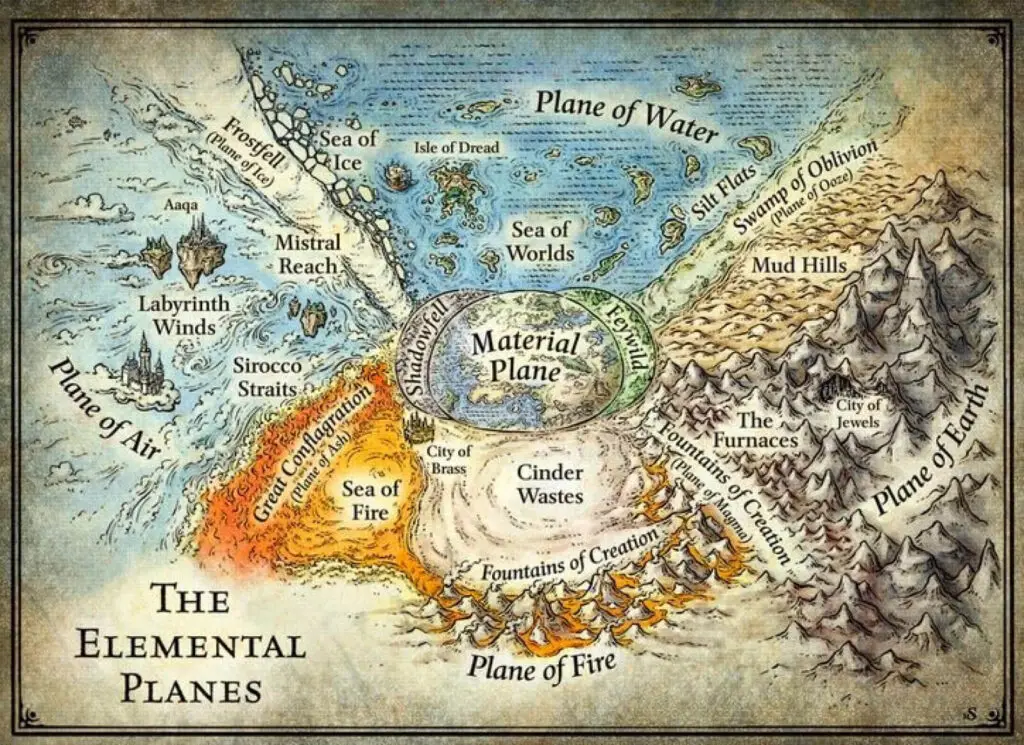
This article will focus on half of the planes, Fire and Earth. The other two will be covered in a separate article, because there is a lot of lore to go through.
In AD&D, spells on the Inner Planes functioned differently, depending on the spell type and the plane. For some spells, this meant that in certain planes, the spell would simply fail (such as casting Control Weather on the Plane of Earth). For other spells, this meant that the spell would be modified to fit the plane (Transmute Rock could become Transmute Element, the element dependent on which plane the caster is on). You could also rule that elemental spells are more powerful on their native plane, normal on their adjacent plane, and weaker on their opposite plane (Fireball, for example, would be boosted on the Plane of Fire, normal on the Planes of Air and Earth, and weakened on the Plane of Water).
Adapting Creatures for the Elemental Planes
Two more ideas from AD&D are Animentals and Elemental Monsters. These can be used to expand and develop the elementals that the players could encounter while on the planes. Animentals are created by taking the stat block of a beast and adapting it to have similar abilities to elements of that plane. For example, a Brown Bear could become a Firebear, a fire elemental that takes a shape similar to that of a bear. We could give the Firebear the Fire Form and Water Susceptibility abilities from a Fire Elemental.
Elemental Monsters are created by modifying monster stat blocks and changing the form the monster takes so your players aren’t aware of what stat block you’re using. For example, we could take the Purple Worm stat block and turn it into an Earthworm, a long chain of boulders that move together as a single being. We could change its Tunneler ability so it doesn’t leave a tunnel behind it, merely shifts the rock around it and give it the Siege Monster ability of the Earth Elemental. We can also give it vulnerability to thunder damage and change its attacks to better fit its new form, adapting the attacks from the Zaratan to fit its CR. As another example, a beholder from the Plane of Earth could be a boulder-like creature with human masks acting as the eyes.
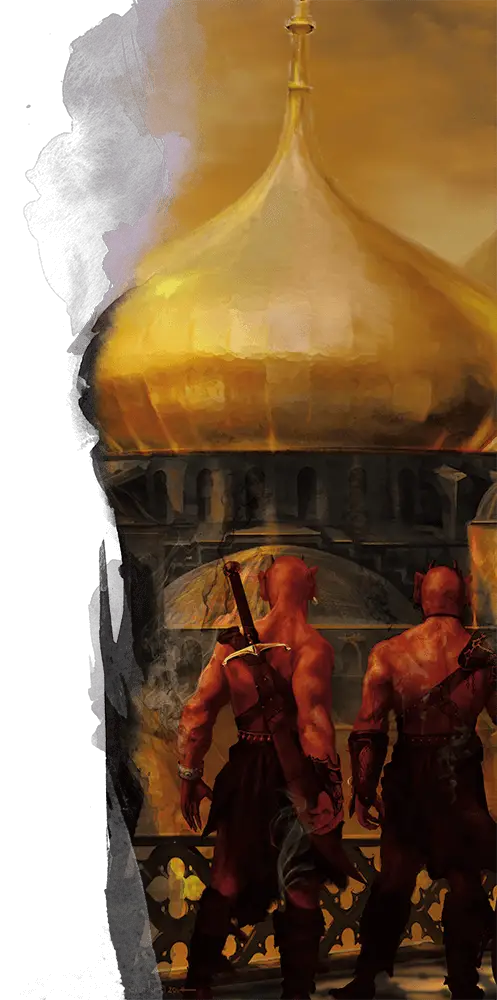
The Plane of Fire
Unbearable heat, ash storms, volcanic eruptions, and roving bands of elementals are just some of the dangers of the Plane of Fire. In the sky, a constant sun cycles between a cool red and a scorching white. Water is a constant concern for mortal beings here, and it quickly becomes difficult to find any sources of water as one travels deeper into the plane. Except for the City of Brass and during the coolest parts of the sun cycle, being on the Plane of Fire will subject one to the Extreme Heat rules on pg. 110 of the Dungeon Master’s Guide.
For more environmental dangers, consider the following table adapted from AD&D’s Manual of the Planes.
| d12 | Planar Effect |
|---|---|
| 1-4 | Hot Spot: this area is hotter than the surrounding areas. Force the players to make an Extreme Heat saving throw. |
| 5-7 | Cold Spot: this area is cooler than the surrounding areas and serves as a brief respite. Other creatures may be here already, and liquid water may be found here. |
| 8 | Rain of Ashes: a cloud of cinders from a distant eruption. Entering it unprotected deals 2d6 fire damage at the start of every round. |
| 9 | Smoke Cloud: thick, choking smoke rolls through like a storm. The air inside the cloud is unbreathable and poisonous. Creatures inside must hold their breath or suffer 2d8 poison damage at the start of every round. |
| 10 | Flaming Cyclone: a spinning vortex of flame that moves on its own. Treat it like the spell Flame Strike but without the radiant damage. |
| 11 | Explosion Field: a geyser of fire erupts from underneath. The area around it acts as a Hot Spot, and being caught too close to it will require a Dexterity Save or take 2d10 fire and 2d10 bludgeoning damage. |
| 12 | Planar Vortex: a portal to another plane, either the Material Plane or another Elemental Plane. These may be permanent portals or just a temporary vortex. |
In addition to these planar effects, adventures could encounter residents of the plane. The could include:
- Efreeti
- Red Dragons
- A raiding party of Salamanders
- Azer
- Fire Giants
- A war band of Fire Newts
- Animental Fire Bats
- Animental Magma Quippers
The Sea of Fire
Adjacent to the Great Conflagration, the Sea of Fire is a vast sea of lava. The efreet and the azer sail across on great brass ships. Dotted across the sea are islands of obsidian and basalt, dotted with ancient ruins and the lairs of powerful red dragons.
The Cinder Wastes
The Cinder Wastes is a vast desert of ash that covers the bulk of the inner parts of the Plane of Fire. Scattered across it are ruins of a forgotten civilization, half-sunken into the desert. Nomadic Salamander tribes roam and raid Azer outposts and Efreeti palaces.
The City of Brass
The City of Brass is the most well-known location in all the Inner Planes. It is an interplanar trade and travel hub, and the size rivals even the largest cities on the Material Plane. It is ruled by the cruel Efreet and functions on the back of their vast hoards of slaves. At its center is the Charcoal Palace, where Marrake al-Sidan al-Hariq ben Lazan, Grand Sultan of the Efreet, the Lord of the Flame, the Potentate Incandescent, the Tempering and Eternal Flame of Truth, the Smoldering Dictator rules from. The Charcoal Palace is rumored to be guarded by a thousand enchantments from archmagi, an army of red dragons and fire elementals, and a legion of devils. The fabled vaults, though, are said to contain unimaginable wealth.
The Efreet
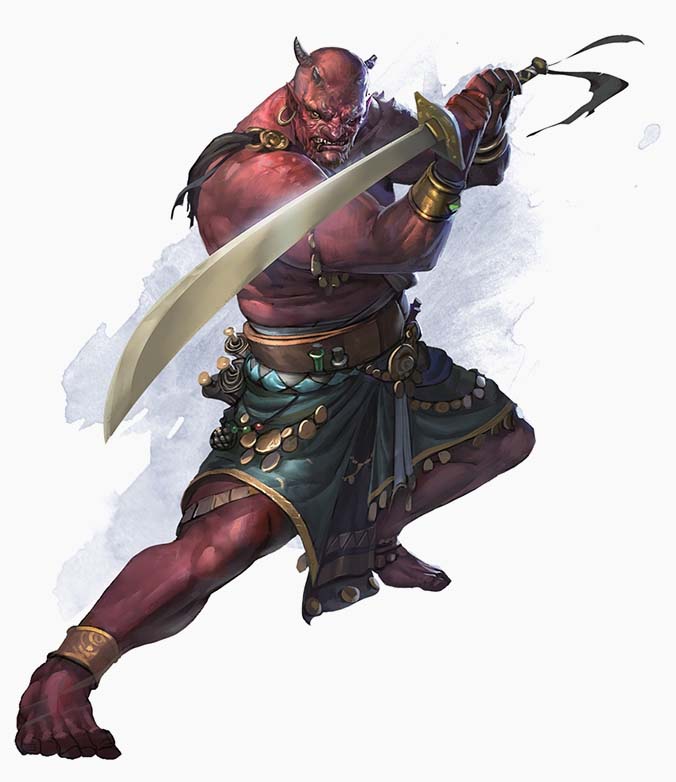
Deceptive and cunning, cruel and oppressive, the Efreet rule as tyrants. The Grand Sultan has proclaimed himself lord over the Efreet, but he was not always the Sultan, nor were the Efreet always in the City of Brass. Many Efreeti rule as nobles in the City of Brass, but others have personal palaces or domed fortresses of obsidian and basalt across the Plane of Fire. The Efreet view all other creatures as potential serfs or enemies to be destroyed. Traders and travelers are only safe in the City of Brass due to the wealth they bring with them. Outside the city, though, an encounter with an Efreet will likely result in a fight.
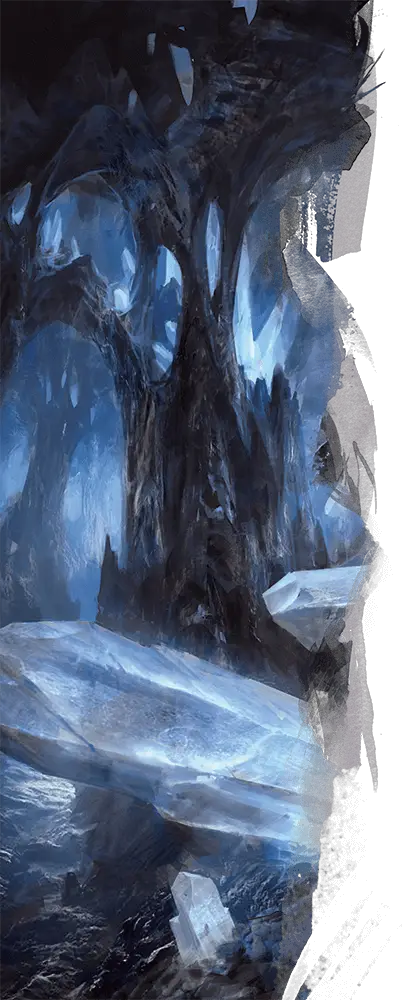
The Plane of Earth
Though one could climb the impossibly tall mountains that make up the Plane of Earth, the true wealth and draw come from what’s under the mountains. Underneath the sunless, skyless peaks are crystal caverns, miles-long ore veins, and the maze-like realm of the Dao. Despite the potential for wealth, few travelers seek it here, as the inhabitants don’t take kindly to outside forces plundering their resources.
For some planar effects and encounters, consider the following table also adapted from AD&D’s Manual of the Planes.
| d12 | Planar Effect |
|---|---|
| 1-4 | Earthquake: the earth suddenly shifts, sending shockwaves through the plane. Roll a d10 to determine severity. On a 1-4, deal 4d6 bludgeoning damage. On a 5-8, deal 6d6 bludgeoning damage. On a 9-10, deal 8d6 bludgeoning damage. |
| 5-6 | Fault Line: a massive chasm that extends impossibly deep. This can cut through caverns or tunnels, creating a barrier to travel. Sometimes mining camps have been set up to extract minerals. |
| 7-8 | Volatile Gas Pocket: a bubble of gas that has seeped through the earth from the Plane of Magma. It functions similar to the spell Cloudkill, and has a chance to be explosive. If explosive and exposed to an open flame, it will explode and deal 8d8 fire damage, and it has a 30% chance of triggering an earthquake. |
| 9 | Mineral Vein: an untouched vein of precious gems or metals. Rarely, the ore is magical. |
| 10 | Fossils: the remains of a creature who became trapped in the rock. |
| 11 | Imprisoned Creature: a trapped creature who is still alive and willing to bargain for its life with any passing creatures. |
| 12 | Planar Vortex: a portal to another plane, either the Material Plane or another Elemental Plane. These may be permanent portals or just a temporary vortex. |
Some potential inhabitants of the plane include:
- Dao
- Xorn
- Gargoyles
- Stone Giants
- Basilisks
- Elemental Bulettes
The City of Jewels
The City of Jewels is the capital of the Dao. It is a magnificent sight to behold, as the entire city has been encrusted with rare jewels. However, powerful enchantment wards against would-be thieves. If a single stone is taken, the entire Dao population is alerted. The punishment for theft is death, for the thief and for their entire family. The Dao are currently ruled by Khatun Zafara Al’Yil Jin Zarain, Queen of the Mantled Depths, Pontiff of the Diamond Cathedral, Protector of the Malachite Scepter after an upheaval in the power structure replaced the prior khan.
The Furnaces
These massive forges are where the Dao process their ores and shape their metals. The whole reeks of sulfur due to its proximity to the Plane of Magma, and occasionally magma will seep into the nearby tunnels.
The Dao
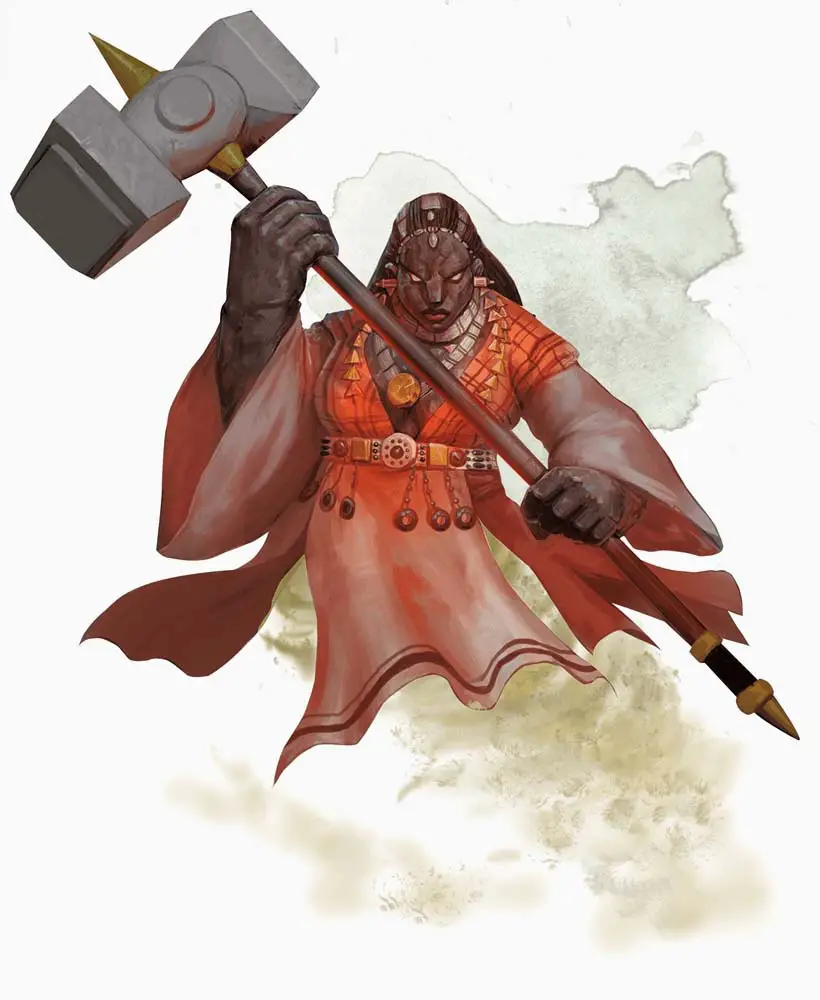
The Dao pride themselves on their wealth and are always seeking to expand it. They trade with the Efreet but do not bother with the other genies. They are always seeking out slaves to mine out more precious gems and metals, often sending the slaves to dangerous and unstable ground in search of more and more wealth. So enraptured with opulence, they often grind gems or gold to a dust to powder their food, as mortal nobles might use a rare spice.
The other two planes, as well as a look at the Para-elemental Planes and how the Inner Planes might look under a different cosmology, will be discussed in Part 4 of this series.

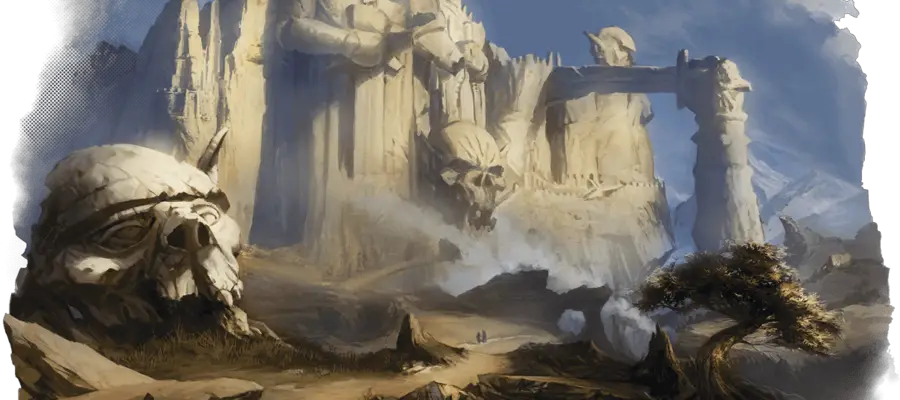



Great stuff! Awaiting part 2.
Added to the Blog Database.